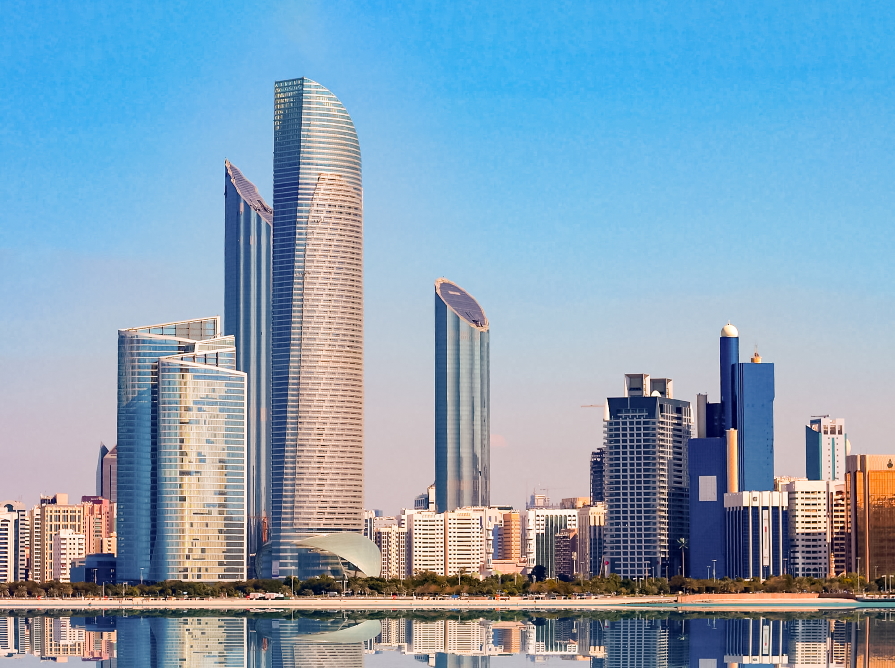Abu Dhabi’s real estate market witnessed continued moderate declines, across both sales prices and rents, during Q2. However, with a raft of developer incentives and the proactive public policy response, sales volumes are expected to increase over the second half of 2020, according to the Chestertons’ Observer: Abu Dhabi Market Report Q2 2020.
Overall, the capital’s real estate market continued to see declines in sales values, with average apartment prices falling by 1.4% and villas by 1.3% q-on-q.
The capital’s residential sector, however, was supported by a rise in loan to value ratio for first-time buyers introduced by the Central Bank of the UAE (CBUAE), coupled with the cancellation of the Abu Dhabi Municipality fee, equivalent to 2% of a property’s purchase price, in March 2020.
Chris Hobden, Head of Strategic Consultancy, Chestertons MENA, said: “While we expect Abu Dhabi to see falls in sales prices over the second half of 2020, generous developer incentives, such as extended post-handover payment plans, initial service charge waivers and discounted prices should serve to support transaction volumes.
“Further initiatives, by both UAE and Abu Dhabi authorities, to support an economic recovery over 2021 bode well for the capital’s real estate market medium term.”
In the apartment sales market, Al Ghadeer saw the highest price declines q-o-q, with average apartment prices falling by 2.1%, from AED 715 to AED 700 per sqft. Al Reef saw the second-highest fall in average prices, reaching AED 750 from AED 765 per sqft over Q1 2020, representing a 2% decline. Saadiyat Island saw the lowest average quarterly decline, with prices falling by just 0.7% to AED 1,370 from AED 1,380 per sqft in Q1.
Al Reef saw the highest price declines on an annual basis, at -7.8%, followed by Al Ghadeer at -6.7%, with average prices reaching AED 750 and AED 700, respectively. In contrast, Saadiyat Island was the most robust performing location on an annual basis, with average prices falling by just 2.1%, from AED 1,400 in Q2 2019.
In the villa market, Al Raha Gardens recorded the highest declines q-o-q, with average prices falling by 2.2% to AED 675 per sqft in Q2. The strongest performing locations were Khalifa City and Al Raha Beach Area, which witnessed declines of 0.6% and 0.5% q-o-q, respectively, with average prices at Khalifa City at AED 840 per sqft, and in Al Raha Beach Area at AED 1,065 per sqft.
While Al Raha Beach Area performed well over Q2, higher than average falls over late 2019 led to an annual decline in average prices of 8.2%, down from AED 1,160 per sq ft in Q2 2019. Al Raha Gardens and Al Ghadeer saw the most moderate yearly price declines of 3.6%, with average prices in both locations standing at AED 675 per sqft in Q2 2020, down from AED 700 in Q2 2019.
Average apartment rental rates fell by 2.2% and villas by 2%, a sharper rate of decline than experienced in Q1, a result of the economic impact of COVID-19. The highest average rental decrease in the apartment sector was in Al Ghadeer, where average rents decreased by 4.2% from Q1 2020, with average two-bedroom apartment rents standing at AED 40,000 per annum.
Al Reem Island witnessed the second-highest quarterly declines, at -4%, due to declining rents for smaller units. Studio rents averaged AED 46,000 while rental rates for a one-bedroom units stood at AED 60,000 per annum.
Corniche Road and Mohammed bin Zayed City saw the greatest stability in Q2, with rents declining by just 0.4% and 0.6%, respectively. Rents for one-bedroom units in Al Khalidya averaged AED 65,000 per annum, with the same size unit in Al Raha Beach Area averaging AED 82,500.
Muroor Area also saw declines of below 2%, with average rents falling by 1.9% q-o-q to AED 50,000 for a one-bedroom apartment.
Average villa rent declines were less pronounced than apartments; however, they witnessed an increased rate of decline over the second quarter of 2.0%, following an overall reduction of just 0.6% in Q1 2020.
Al Raha Gardens saw the most moderate decline in quarterly rents, with average rates falling by just 0.5% over Q2, following a rise of 2.3% in the previous quarter. Three-bedroom units in Q2 averaged AED 144,000 per annum.
Al Reef was the only other location to see average rents fall by below 1%, declining by just 0.8% q-o-q. Average rents for three-bedroom units fell by 2.4%, to AED 100,000 per annum, from AED 102,500 the previous quarter, with rents across four- and five-bedroom villas holding steady at AED 130,000 and AED 140,000 per annum, respectively.
The most significant decline in average rents was seen in Al Ghadeer, with rates falling by 4.4% over Q2, following a 2.4% decline over Q1 2020. Average rents for three- and four-bedroom villas stood at AED 95,000 and AED 120,000 per annum, respectively, compared to AED 110,000 and AED 130,000 in Q2 2019.
“The most significant ongoing threat to the rental sector comes from a fall in demand driven by rising unemployment and declining income levels for private sector workers. The second quarter witnessed a rise in unemployment, especially across travel-related sectors, and a further fall in Abu Dhabi’s expatriate population presents a clear risk moving forward.
“With Abu Dhabi’s economy forecast to rebound next year, we expect to see greater stability across residential prices and rents over 2021,” concluded Hobden.







